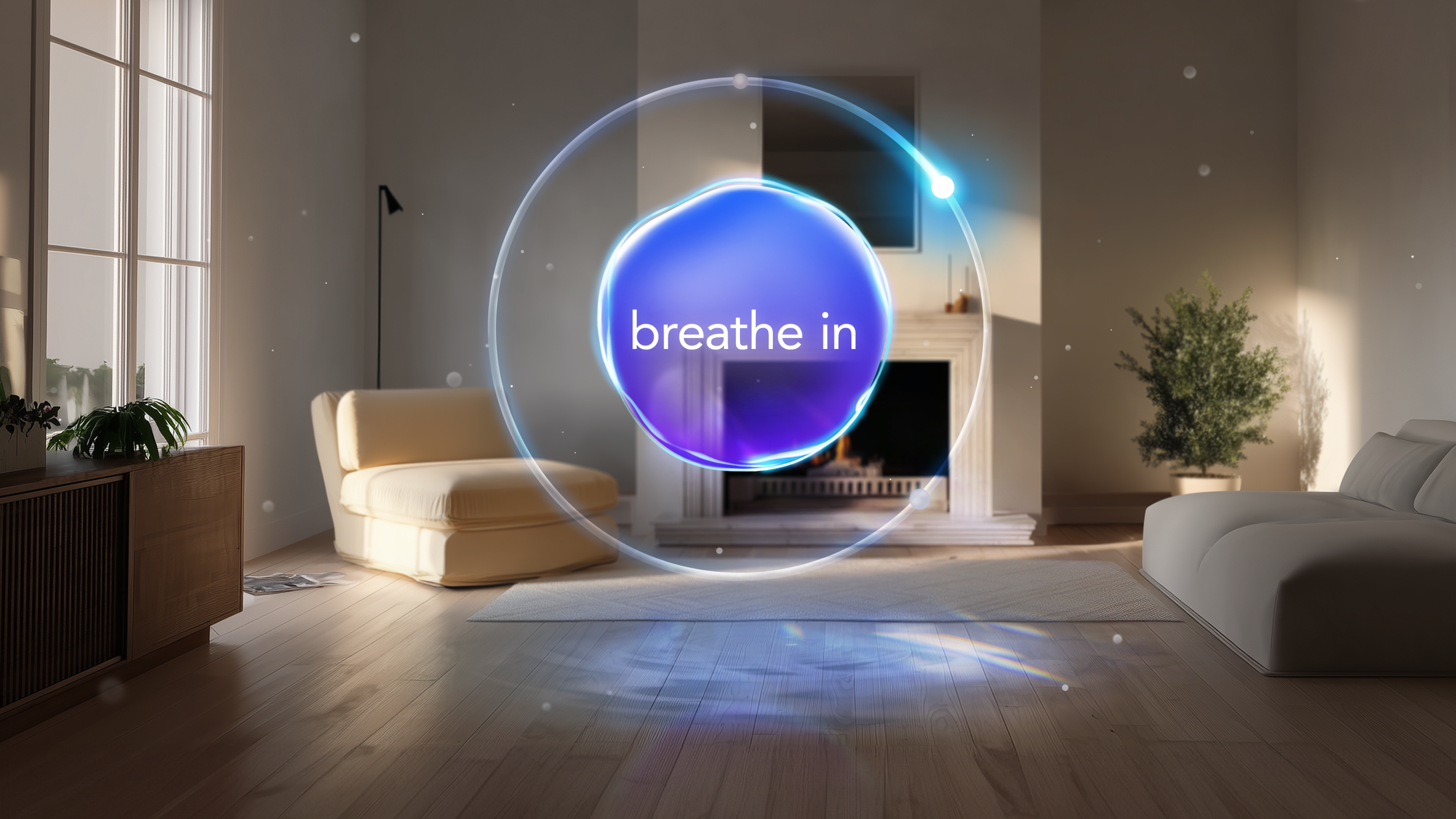Immerse yourself in Calm with our new Android XR app
Calm has teamed up with Google to create a breathtaking—and breathmaking—custom experience for the new Android XR. Don’t just listen to Calm, dive into it.
At Calm, we’re all about shifting you into the present moment, letting distractions melt away, and leaving the noise of the world behind. Now we can do that literally, through the use of extended reality (XR) technology.
We’re bringing you the Calm content you love, redesigned and spatialized for Samsung’s innovative, state-of-the-art headsets. The Calm app on Android XR is like a personal theater, on demand, to help you get present, relaxed, and even ready for bed.
The immersive experience has been carefully crafted—and carefully customized—to make mindfulness and stress reduction practices more approachable, accessible, and effective.
Features include immersive menu navigation, a new 3D Breathe Bubble exercise, and dedicated meditative scenes.
Basically, you can transform any space into your own private sanctuary with 360° Calm environments. The dune environment scene surrounds you with rolling hills and soft light. The lake environment scene lets you escape to a tranquil retreat of open water and mountain air. And they all adapt to the time of day.
At launch, we’re offering more than 50 Calm audio experiences—meditations, soundscapes, focus music, and more—hand-picked and optimized for the Android XR platform, with our library refreshing over time. Future releases will include an interactive build-your-own-soundscape tool, gestural control, hand tracking, and AI integrations.
Android XR is available now, and you can download the Calm experience by going to the Google Play Store on an Android XR-powered device.
Calm your mind. Change your life.
Mental health is hard. Getting support doesn't have to be. The Calm app puts the tools to feel better in your back pocket, with personalized content to manage stress and anxiety, get better sleep, and feel more present in your life.


